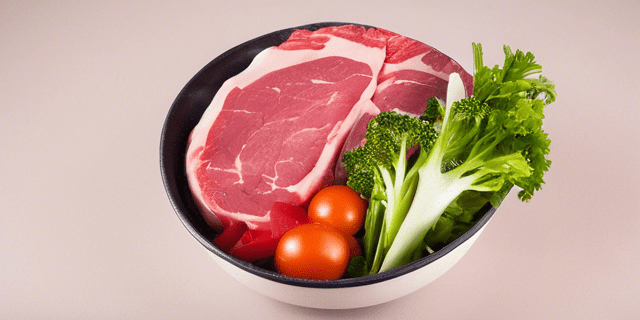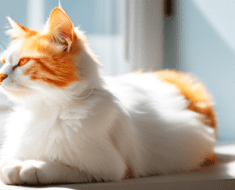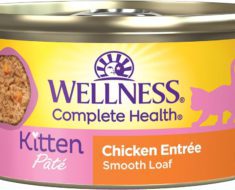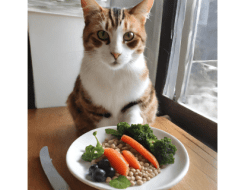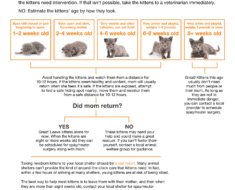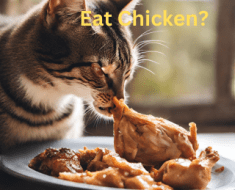Give your cat the right amount of raw food based on its size and weight. Remember to take into account your cat’s particular needs and seek advice from a veterinarian for more details.
To ensure your feline friend’s overall health and well-being, a nutritious diet is required. Because raw food diets are thought to resemble a cat’s natural prey-based diet, many cat owners have resorted to using them. It can be difficult to figure out how much raw food is appropriate for your cat, though.
This article aims to provide you with accurate information on how much raw food you should feed your cat based on its individual needs and weight. By following these guidelines, you can ensure that your furry companion receives the optimal nutrition it requires for a healthy and happy life.
Benefits Of Raw Food For Cats
Feeding your cat raw food can offer several benefits. First, it can lead to improved digestion. Raw food is easier for cats to digest compared to processed kibble, which often contains fillers and additives. This can result in better nutrient absorption and reduced instances of stomach upset or gastrointestinal issues.
Another benefit of raw food is that it can promote a healthier coat and skin. Raw food is rich in essential fatty acids, such as omega-3 and omega-6, which are beneficial for skin health. These fatty acids can help reduce dryness, itchiness, and inflammation, resulting in a softer and shinier coat.
Furthermore, feeding your cat a raw food diet can also contribute to overall better health. It can support a strong immune system, better dental health, and even weight management. Just ensure that the raw food diet is balanced and provides all the essential nutrients your cat needs.
Understanding A Cat’s Nutritional Needs
Understanding a cat’s nutritional needs is essential for their overall health and well-being. Protein requirements play a crucial role in a cat’s diet. As obligate carnivores, cats have a higher demand for protein compared to other animals. High-quality animal-based proteins are the key to meeting a cat’s nutritional needs. These proteins provide essential amino acids that cats cannot produce on their own. In addition to protein, cats require other essential nutrients such as vitamins, minerals, and fatty acids. These nutrients support their immune system, promote healthy skin and coat, and aid in proper digestion. It is important to provide a balanced diet that includes both raw and processed foods, as each has its own benefits. When feeding raw food, ensure it is safe and properly handled to avoid any potential health risks.
Transitioning To Raw Food
Transitioning to Raw Food: When introducing raw food to your cat, it’s important to start slowly to prevent any digestive issues. Gradually mix small amounts of raw food with their regular diet and monitor their reactions closely. If they respond well, increase the proportion of raw food, making sure to adjust as needed based on their tolerance. Pay attention to their energy levels, coat condition, and overall health during this transition period. Keep in mind that some cats may take longer to adjust, so be patient and observe their behavior to ensure a successful transition.
Determining The Right Quantity
Determining the right quantity of raw food for your cat is crucial for their health. It’s important to consider their weight, age, and activity level to ensure they’re getting the right amount of nutrients. Consulting with a veterinarian can help tailor a feeding plan that meets your cat’s unique needs.
| Determining the Right Quantity |
| Weight and Activity Level |
| For cats, the amount of raw food depends on their weight and activity level. |
| Consulting a veterinarian is essential to getting personalized advice for your cat. |
Managing The Raw Food Diet
|
Cats require an appropriate amount of raw food to maintain optimal health. It is important to manage their diet carefully to ensure they receive essential nutrients. |
|
When handling raw food for cats, make sure to store it properly to prevent contamination. Practice good food safety measures to avoid any health risks. |
Frequently Asked Questions For How Much Raw Food To Feed Cat
How much raw food should I feed my cat?
Feed your cat raw food according to a chart that specifies portion sizes based on weight. Be sure to consult with a veterinarian for accurate guidance tailored to your cat’s specific needs.
How Do You Calculate Raw Food for Cats?
To calculate raw food for cats, determine the amount based on their weight and activity level. Feed them 2–4% of their body weight per day, divided into multiple small meals. Adjust the portion size as needed for weight management. Remember to consult with a veterinarian for personalized feeding recommendations.
Can I feed my cat raw food every day?
Yes, you can feed your cat raw food every day. However, it’s important to ensure the diet is balanced and suitable for their nutritional needs. Be cautious of potential health risks and consult with a veterinarian before making any significant dietary changes for your cat.
Is raw food more filling for cats?
Yes, raw food is more filling for cats due to its higher protein and nutrient content.
How Much Raw Food Should I Feed My Cat Daily?
Feeding your cat approximately 2–4% of their body weight daily is ideal for a balanced diet.
Conclusion
In sum, understanding how much raw food to feed your cat is crucial for their health. By following a balanced approach and consulting with your veterinarian, you can ensure your feline friend receives the right amount of nutrients. With proper portion control, you can promote their overall well-being and happiness.
